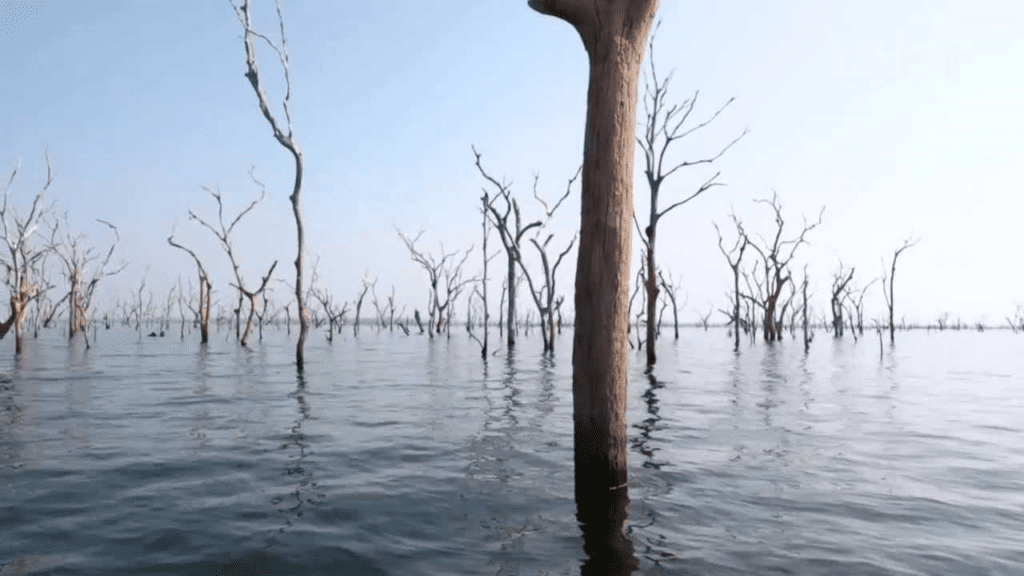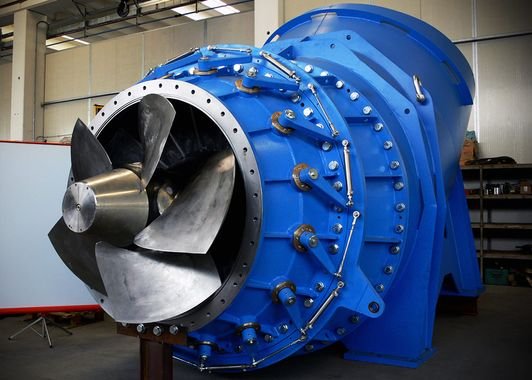In this post is shown the operation of big run-of-river hydropower plants. Dismissing necessity of a big reservoir.
In post “Small hydropower plants” was quoted operation run-of-river in small power plants.
Small hydropower plantsClick here
Environmental impact of hydropower plants
Although it is a clean and renewable form to generate energy, construction of hydropower plants causes floods in big areas. These floods destroy plant and animal habitats, could enter in risk of extinction. People who live in flooded areas have to move.

Other environmental impacts are:
- Harm reproduction of fishes, because dams interrupt the way to spawning. To solve this problem, fish ladders must be built.
- Physicochemical changes, like water eutrophication, temperature changes, oxygen concentration reduction and change in sediment flow. Consequently, toxic compounds can be produced.
How a run-of-river power plant works?
The run-of-river power plant has a dam with penstocks to direct water flow to the turbine.

Electrical energy generated depends on kinetic energy of current (flow rate) and potential energy of level difference in terrain. Due to reservoir absence, this type of power plant depends more on flow rate. Turbines for run-of-river power plants must be for high flow speed like the Kaplan types.

Kaplan turbine is reaction type, when water hits the blades, a lift force is generated in blades, making they move turning the turbine. Same operation principle of airfoil.

Other components are the same of a hydropower plant with reservoir. This is the equation to calculate power P in Watts generated by a turbine.
P=\eta\cdot \rho\cdot g\cdot Q\cdot h
- \eta is turbine’s efficiency.
- \rho is water density, whose valor is 1000 kg/m^{3}.
- g is acceleration of gravity, whose valor is 9.81m^{2}/s.
- Q is volumetric flow rate in m^{3}/s.
- h is difference between upstream and downstream of turbine in meters.
Advantages and disadvantages
The advantages of a run-of-river power plant in comparison with tradicional hydropower are:
- Can work without a reservoir, reducing environmental impact caused by flood.
- Dam structure is smaller, reducing material quantity and costs.
As for disadvantages:
- Because don’t have a reservoir, can stop working in long periods of drought. Therefore, some run-of-river power plants have small reservoir.
- Has lower capacity factor. This is an dimensionless quantity, it is the division between effective generation in a year, in MWh/year, and maximum nominal generation.



